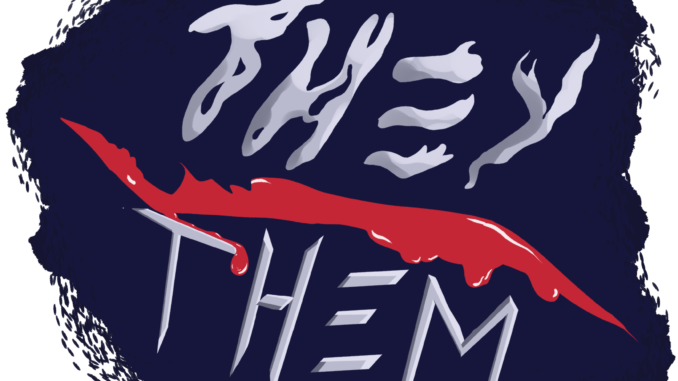
Horror created by, for transgender people represents industry shift away from stigmatizing depictions
The horror genre has always been near and dear to queer people, however the queer transgender slasher is on the rise. This is the result of trans people starting to gain control over media representations.
This increase is best represented by the newly released Blumhouse and John Logan project. What is more camp than (conversion) camp? In an ode to the likes of films such as “But I’m a Cheerleader,” conversion therapy has once again entered the film lexicon with the slasher “They/Them.” If you are wondering, yes, the slash is pronounced in the title.
In Logan’s directorial debut, classic themes of the queer “other” meet explicit trans representation. Queer-coding and explicit representation are commonly seen as opposite, however this film proves this to not be the case. Students who have taken Assistant Professor of Rhetoric & Media Studies Melanie Kohnen’s Queer Film & Television class, such as myself, know this extremely well.
Representation paired with classic comfort tropes resonates deeply for Logan.
“They/Them has been germinating within me my whole life,” Logan said in a statement. “I’ve loved horror movies as long as I can remember, I think because monsters represent ‘the other’ and as gay kid I felt a powerful sense of kinship with those characters who were different, outlawed, or forbidden. I wanted to make a movie that celebrates queerness, with characters that I never saw when I was growing up. When people walk away from the movie, I hope they’re going to remember the incredible love that these kids have for each other and how that love needs to be protected and celebrated.”
However, not only does Logan’s work combine nostalgia with trans characters, but it also is backed by the star power of a nonbinary actor: Theo Germaine playing the main character is significant, as even when trans people get depictions in film and television they are often played by cisgender actors. For example, think of Buffalo Bill in the horror classic “Silence of the Lambs.”
According to a Tweet by Germaine, they also felt the impact of this role.
“I’ve dreamed of getting to work in this genre since I was a kid,” Germaine tweeted in September 2021. “This is for 12-year-old me, who was obsessed with horror films, and was the only kid in my school who read @FANGORIA. This is also for my late uncle, who collected Friday the 13th merch and also loved horror.”
For these reasons, regardless of how good (or bad) “They/Them” is, it is an important addition to the film canon. One that many of my trans peers also find significant.
For more commentary on this phenomenon, check out “Queer for Fear: A History of Queer Horror,” a four part Shudder-exclusive documentary which analyses the history of queerness within the horror genre. Produced by Bryan Fuller, the series will be released later this year and features drag queen Alaska Thunderfuck recreating the iconic “Carrie” imagery on the cover.
“Queer for Fear” is essential in making explicit the history between queer people and horror. I, for one, cannot wait to watch as I love the media created by the people involved. However, I will critically watch with one question in mind: Are the histories of trans horror being told as well?
Subscribe to the Mossy Log Newsletter
Stay up to date with the goings-on at Lewis & Clark! Get the top stories or your favorite section delivered to your inbox whenever we release a new issue.

Leave a Reply